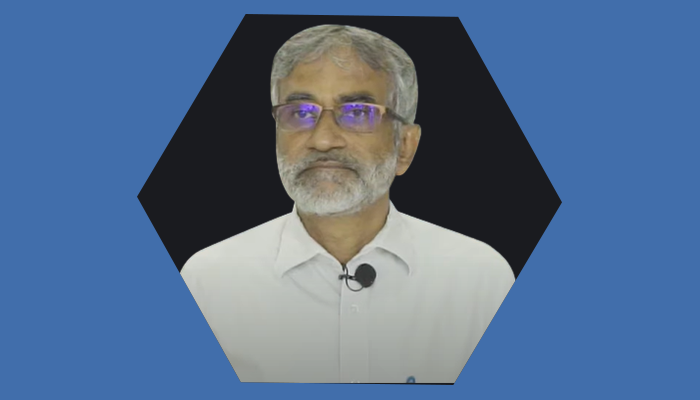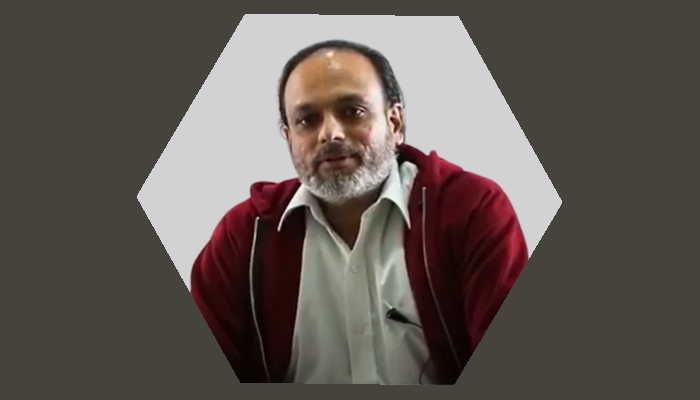The International Institute of Information Technology Hyderabad’s newest Centre for Quantum Science and Technology is the first of its kind in India. It aims to uniquely contribute to the Quantum tech space by combining it with the domains of Science and Technology. Let’s take a look.
Quantum computing is the newest kid on the IT block and there’s excitement aplenty about how computers that perform these calculations can “fundamentally change the way what one can do”. Joining an elite list of nations such as the US and China among others, India too has embarked on a mission to build quantum computers since 2019. To facilitate research in this emerging field, the Department of Science and Technology (DST) has set up a programme called Quantum-Enabled Science and Technology (QuEST). It’s first ever meeting that was conducted to lay out a roadmap for the upcoming initiatives was held at the International institute of Information Technology Hyderabad (IIITH) which has always been at the forefront in the areas of computing and communications.
Evolution Of A Dedicated Centre
According to Prof. P J Narayanan, Director, “Quantum computing is a truly futuristic area with huge potential that we must invest in today to reap benefits in the near future. IIIT Hyderabad had recognised the importance of quantum computing and started research in related areas about 10 years ago”. Students back then were exposed to the concepts of quantum computing and quantum information via courses taught by Prof. Harjinder Singh of the Centre for Computational Natural Sciences and Bioinformatics (CCNSB) and Prof. Kannan Srinathan of the Center for Security, Theory and Algorithmic Research (CSTAR). With more students evincing interest and signing up for them, the introductory topics which served as a sneak peek into the quantum world of computing gradually evolved into the establishment of full-fledged courses.
“Later, there was a course conducted in collaboration with Microsoft. Plus with a new group of expert faculty joining in, a need was felt to have an umbrella under which the group activities could be carried out. All these served as catalysts in opening up a dedicated centre towards quantum computing,” recounts Dr. Indranil Chakrabarty, one of the early contributors to the process. In July this year, the Centre for Quantum Science and Technology was formally set up. Currently, the group has 6 members with a mix of expertise in Physics, Mathematics, Computer Science and others. “There is a technological aspect and there is the Science aspect to the nomenclature of the centre. When I say ‘technology’ here, I am referring to the applied part of it, and when I say ‘Science’, I am referring to the Science that leads to this technology,” says Dr. Chakrabarty, adding that emphasis to both is given at the centre.

Quantum Applications
The domain of quantum computing finds itself at the intersection of many areas of natural sciences like high energy Physics, Chemistry, Biology, and so on. “All these areas overlap with quantum computing in the sense that the understanding of new quantum effects over one field is not only having a meaning and a say in the other fields, but also helping to solve the complex problems which are there in the fields for a long time,” says Dr. Chakrabarty. These problems were hitherto unsolved due to the lack of the ability of classical computations. Citing its application in healthcare such as drug design, Dr. Chakrabarty says that the kind of computational power required to design absolutely accurate drugs requires a huge computing source. “In addition to that, the speed that quantum computing gives for a particular problem is far far higher than the classical approach, automatically generating interest among scientists because now they are able to tell things more precisely thanks to this kind of computation. Similarly people can solve age-old unsolved classical problems with the understanding of quantum information and computing”.
Faculty And Areas of Research
With the recent induction of Dr. Subhadip Mitra, Dr. Shantanav Chakraborty, and Dr. Samyadeb Bhattacharya, quantum physics at IIITH has received a shot in its arm.
Quantum Communication and Foundations
Dr. Indranil Chakrabarty’s major achievements lie in quantum communication. This includes broadcasting of entanglement, correlation, nonlocality and coherence for mixed states and higher dimensional states with different types of cloning process. While he works in Quantum Communication, Quantum Information Theory, Quantum Network, Quantum Foundation and Quantum Cryptography, he is also interested in Classical Information Theory. Another important domain to which he has greatly contributed is the characterization of resources which are useful for communication. In the area of quantum secret sharing, he has designed protocols like probabilistic secret sharing, and sequential secret sharing. Quantum information theory also consists of different kinds of complementarities that have been explored by Dr. Chakrabarty.
Open Quantum System and Quantum Foundation
Dr. Samyadeb Bhattacharya’s research interests lie in four main areas:
1) Open quantum system, where he is currently modelling the dynamics of quantum systems interacting with spin environments and studying their correlations under the mentioned evolutions. He is also working with the characterization of non-Markovianity and their applications in Quantum information and thermodynamics.
2) Quantum Thermodynamics with research on the control and manipulations of Quantum thermal and electronic devices, modelling non-Markovian quantum heat engines, diodes, transistors and other such quantum electronic devices. In addition to this, he is engaged with establishing protocols to achieve fast efficient cooling in Quantum absorption.
3) Quantum Resource Theories where he is modelling and characterizing various quantum resource theories like entanglement, coherence, non-Markovianity and so on.
4) Quantum Entanglement Theory where the focus is on the theory of positive maps, entanglement detection as well as the characterization and detection of multipartite entanglement.

Dr. Subhadip Mitra is a theoretical/computational physicist with expertise in a wide range of problems in quantum theories and high-energy physics. He has worked extensively with different aspects of quantum field theory, like non-local-gauge-invariant quantum field theory, scale-invariant realisations of quantum field theory, etc. An expert in numerical simulations of physical theories, Dr Mitra, is currently working on the challenging task of simulating new physics signals in the Large Hadron Collider environment. With his specific interest in quantum computing, he is exploring its roles in physics computations and understanding nature. He has also been working on various quantum entanglement and coherence-related problems over the last few years.

Quantum Computing
Dr. Shantanav Chakraborty’s primary area of research is quantum computation and quantum algorithms. He has worked extensively on designing new quantum algorithms by quantum walks and on improving existing ones. “My research looks for ways to harness the properties of quantum physics, governing the dynamics of sub-atomic particles, to perform meaningful computational tasks,” he says. One of the long-standing open problems that he’s seeking to address is a deeper understanding of the relationship between classical random walks and quantum walks. Research on quantum walks is inspired by the versatility of its classical counterpart. Classical random walks, in which a walker randomly decides what path he’s going to take, are often used as examples to explain physical effects. Dr. Chakraborty is also currently engaged in the demonstration of the applicability of noisy, small-scale quantum computers that will be available soon.

Quantum Chemistry
Quantum computing, as mentioned earlier, finds its application in all fundamental problems of natural sciences. For Prof. Harjinder Singh, this means calculating electronic structure and molecular properties, where along with his students, he has recently showcased the effectiveness of using near-term quantum computers. The application uses techniques based on hybrid quantum-classical algorithms such as Variational Quantum Eigensolver, which are more suitable for Noisy intermediate-scale quantum devices than the traditional quantum algorithms like Quantum Phase Estimation. His group is also working on problems related to optimizing quantum circuit architecture, such as qubit routing and ansatz structure design, which are crucial for efficient use of the current generation of quantum hardware.

Quantum Cryptography
Dr. Kannan Srinathan’s initial area of research was in classical cryptography. His interests in the quantum computing lie from the perspective of security and algorithmic research. His active working interest includes quantum secret sharing, quantum bit commitment, and the quantum byzantine agreement.

According to Prof. P J Narayanan, with the establishment of the new Centre for Quantum Science & Technology (CQST), the institute’s hope is to develop it into a major national and international player in the area of Quantum Information Sciences, from creating quantum computers to developing quantum computing models to quantum algorithms and their applications to various areas like Healthcare, Sciences, Machine Learning, and others. “It is only natural that IIIT Hyderabad stays ahead in these areas for years to come, just as we have done in other areas of computing and communications,” he says.


